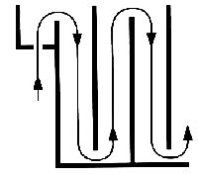Hi, guys. I'm trying to get past lock-ups and I've decided to make my own paper wash. My problem is that to bring me one from the United States the cost is high, the product must travel to Paraguay. The washing machine I'm thinking about Vertical (space frames in the lab), for copies40x50cm. My doubts are in the entrance of liquid if it is by the side or by the floor of the washing machine the drainage, I am thinking about a species of siphon to empty and with an overflow envelope for the liquid. What you can collaborate on images and videos will be valued. A thousand thanks and a greeting from the south of the hemisphere. Here we are also in isolation.
Manténgase a salvo, guarden prudente distancia.
Translated with www.DeepL.com/Translator (free version)
Manténgase a salvo, guarden prudente distancia.
Translated with www.DeepL.com/Translator (free version)



